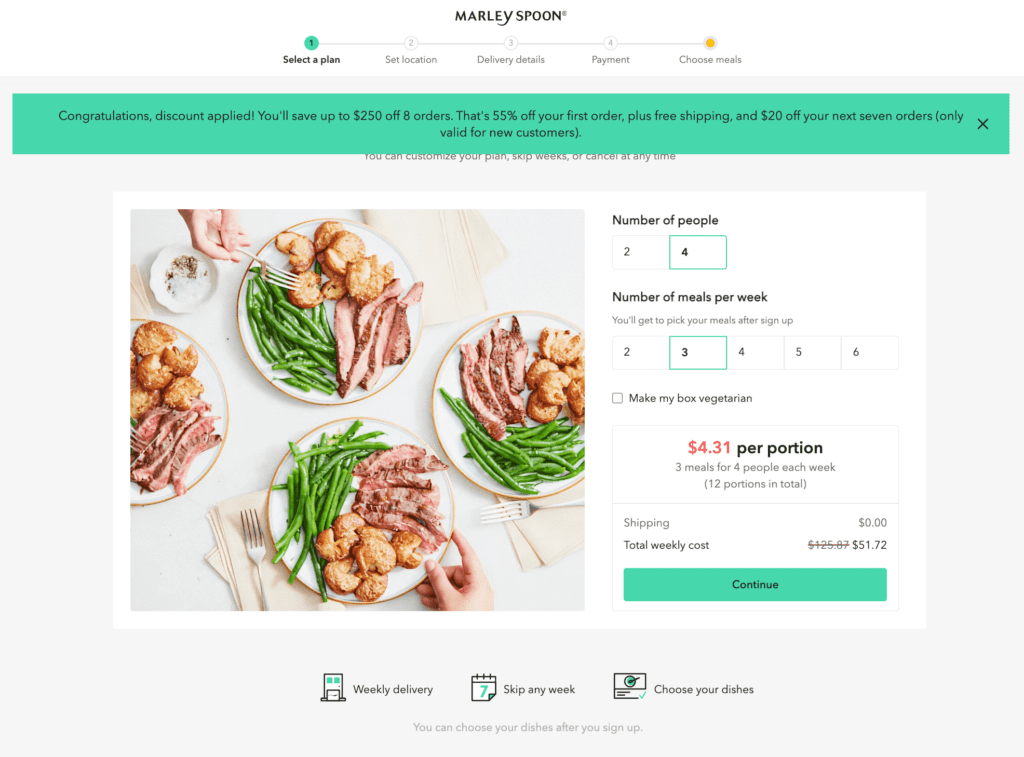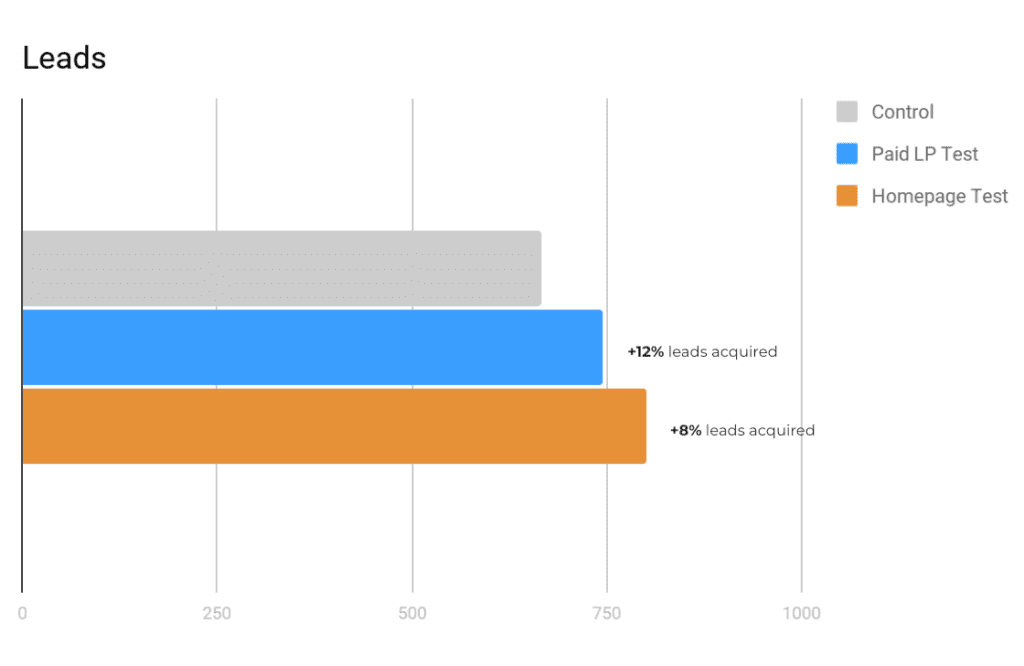Do You Have a Landing Page Problem?
The use of dedicated paid media landing pages (LPs)— pages separate from your primary website created for traffic from digital ads—is an age-old practice to move intent into purchase. They’ve been the online equivalent of direct response for 20 years, much like the infomercials of decades past.
This “best practice” is not the best use of your ad dollars. Ditching your paid LPs is not only an unlock to short-term growth, but is the path to sustained, compounded growth (and probably your next promotion).
Why now? Amidst shrinking budgets and an ever more competitive digital advertising environment, the days of “growth at all costs” are behind us. When we emerge from a down economy, will you be ahead of your competitors or playing catch-up?
Read on to learn how developing an integrated conversion rate optimization program, not individual LPs, will ensure you’re cyclically capturing, cultivating, and converting prospects across the purchase journey, rather than turning them away to your competitors.
Where Landing Pages Fall Short… and How to Fix It
Problem 1: Ad platform evolution will make LP’s obsolete
Dedicated LPs are becoming obsolete as ad platforms roll out automated buying features and strip control from marketers. Directing ad traffic to a specific URL is one of those controls, as evident from increasing in-platform conversion events and Google’s Performance Max. Tactics like dedicated LPs are rapidly becoming obsolete.
Smart marketers tailor their strategies, adapt to platform changes, and move key levers available—continuous optimization across your site is one of those levers.
Sticking your head in the sand isn’t an option. Testing into new ad platform features, campaign types, and placements is vital to maximizing long-term performance. As the ability to leverage dedicated LPs steadily slips away, full site optimization via an integrated program becomes an ever more important lever for marketers. Site experiences that enhance the ways ad platforms reach your buyers, not create a disconnected experience, will ultimately allow you to understand what your customer wants and how best to reach them.
Problem 2: Mismatched prospect cultivation sacrifices sales

Dedicated LPs often fail to meet the needs of a prospect early in their purchase journey—top-of-funnel (awareness) and mid-of-funnel (consideration). Assume I’m bad in the kitchen and casually researching meal delivery providers. After searching “HelloFresh”, a brand I’ve heard of, I’m served the below ad from Martha Stewart’s meal kit service Marley Spoon.
Which clicking through directs me to this LP…

I land right in the checkout flow. I have no idea what meals I’m getting or what my options are, let alone any social proof that folks love Martha’s meals. I’m confident this isn’t the best choice for me. Sorry Martha, I’m out.
This coupling failed to tailor my intent to the experience, prompting my exit. Had Martha directed to the primary Marley Spoon website where personalized messaging matched my intent, I’d more likely made a purchase after research or at least put Marley Spoon on my list to revisit. Instead, I’m left with a bad taste in my mouth… I couldn’t help myself there.
Taking the full-funnel approach to cultivation
Audience segmentation enables customizing your creative and site experience to speak to prospects’ unique needs. But rather than creating burdensome dedicated LPs by funnel stage or campaign, consider how your existing site speaks to different audiences. For instance, direct awareness or consideration audiences to the homepage or product category pages to enable product discovery and education, building brand awareness and recall.
Further, optimize this experience by testing elements that amplify your desired outcome. On the homepage of a popular footwear client, we tested more prominent call-to-action buttons linking to product category pages to increase engagement and education among awareness stage audiences. The winning variation increased homepage hero CTA clicks by 29% and decreased bounce rates across audiences.

Problem 3: Costly missed opportunities to know your customer
LPs don’t provide long-term insights about customer buying behavior or how to increase lifetime value. They are short-term, disjointed plays at one-off growth that limit learnings applicable across channels and your marketing strategy. In other words, your holistic integrated growth strategy suffers.
Optimizing your primary website provides compounded learnings that inform marketing strategies and channels across the customer journey.
By employing this strategy, my team helped a technology company decrease lead acquisition costs by 20% and increase conversion rate by 8% with a series of just 2 integrated tests. Digging into the client’s analytics, our team saw paid traffic bounce rates consistently exceeded benchmarks. We hypothesized that creating a more engagement-forward, conversational site experience would increase lead acquisition and deployed a test specifically targeting Paid Search traffic. Positive results prompted iterating upon this learning with a separate homepage test across traffic sources. Results again demonstrated our hypothesis was valid, further decreasing lead acquisition costs and improving conversion rate.

Had our team stopped after the initial Paid Search experiment, we would have left unrealized customer learnings and revenue “on the table” for this client. No one should trade one-time lifts for compounding impact.
Problem 4: Attribution bloat misinforms budget allocation
LPs alone don’t resolve platform attribution differences that impact budget allocation and performance. While LPs historically helped isolate paid media traffic, Problem 1 illustrates marketers are losing this control.
Trusted attribution—or the lack thereof—has been a hot topic for as long as paid advertising has been around (no offense, iOS14). But with advertisers wasting $5.46 billion of digital ad spend budgets in 2022—41% of last year’s total—knowing where to allocate budget has never been more important. Platforms bloat their performance with opaque attribution models, making buy optimization all the more difficult.
Build and maintain a base of data and a validated attribution model you can trust.
By directing paid traffic to your general website, rather than wrangle results from scattered LPs, you’ll gain a holistic understanding of your visitor behavior and KPIs. More readily identify customer purchase behaviors relative to audience value and segments, and unlock insights and testing opportunities: What promotions to test, how to position your products based on journey stage, refine new offerings before full launch, validate pricing strategies, and open pathways into new audiences or market segments.
Experimentation is the Key
None of my advice is worth expending energy on unless it’s validated through experimentation. After running more than 22,000 experiments for clients across diverse industries, we’ve arrived at a Build-Try-Optimize (BTO) framework rooted in experimentation.
- Build
- Build a unified data source of all your website behavior, platform data, and source of truth transactions to understand your audiences and their customer journey. Ensure all your data collection and tracking are configured flawlessly.
- Try
- Link ad creative to LPs on your primary website, starting with awareness and consideration campaigns. Test into this change by splitting traffic to more readily compare performance and build a base of evidence.
- Optimize
- Ideate integrated tests using newly enhanced data-backed learnings. For instance, lifestyle creative may outperform product-centric alternatives in platform, yet your landing page exclusively features product imagery. Test, evaluate, deploy winners, and iterate.
Applying our BTO framework to develop and manage integrated experimentation programs drives amazing results for our clients.
Or, Let Us Do It For You
Marketers who adopt long-term strategic thinking set themselves and their companies apart. Approaching your digital marketing as a holistic program committed to sustained growth is more important than ever. Today, I outlined how adopting an integrated approach to paid media and conversion rate optimization can benefit you. But this is just the first step.
We at Cro Metrics want to be your strategic partners and help you come out of this as winners. Let’s talk.

